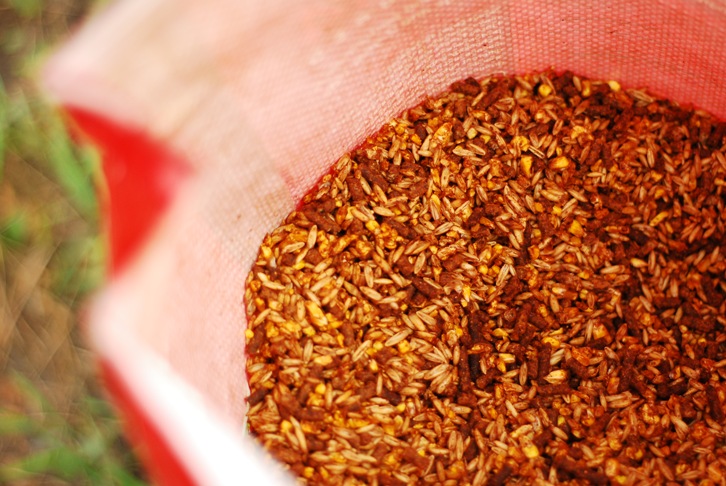Selecting the Right Feed

Browsing through the aisles of your local feed store, it’s likely you have noticed the variety of horse feeds available. National brands, regional brands and local manufacturers all crowd the shelves, adding to the confusion. Which feed is right for your horse? Here is a quick guide of what to consider when you are contemplating your feed selection. Start by assessing your:
- Horse’s life stage
- Horse’s activity level
- Any health issues your horse may have
- Feed budget
Most feeds are designed to meet the specific nutrient requirements of life stages and activity levels of horses, and generally will specify on the packaging what they are designed for. When estimating your horse’s activity level, be reasonable in your classification since over feeding energy can make him ‘hot’ and he may gain unwanted weight. Generally when people see this happening, they tend to reduce the amount fed below the recommended feeding rate instead of changing to a lower energy feed. This is not advised, as dropping below the recommended feeding rate means your horse is not getting the essential micro-nutrients he needs. Try switching to a lower energy feed such as a maintenance feed or balancer. Most maintenance feeds are formulated to provide mid to low energy levels.
If your horse has a specific health issue that can be influenced by his feed, make sure to seek out the information from the bag, your veterinarian or directly from the manufactor. For example, horses with a history of feed-related laminitis are often best suited to a diet feed or ration balancer which provide much needed minerals and vitamins while keeping starch levels under control.
Finally, consider your budget. The features and benefits of feed typically drive up the cost; so ask yourself, can I afford to feed this product at the recommended feeding levels? Note that feeding rates vary between products and this can influence the cost to feed your horse per head, per day; it is not enough to consider the price per bag alone. If you are feeding an inexpensive feed but loading it with supplements, it may cost you more than purchasing a commercial complete feed and cutting out the supplements.
Complete feeds are formulated with all the necessary nutrients to meet your horse’s needs in the proper ratios. When feeding a complete feed, be sure to follow feeding directions closely and monitor his weight through assessing his body condition score and calculating his weight periodically.
This is a very quick guide to help you navigate the increasingly complex decision of how to select the feed that is right for your horse. For more in-depth information, refer to a feed selector or ask a qualified equine nutritionist.
